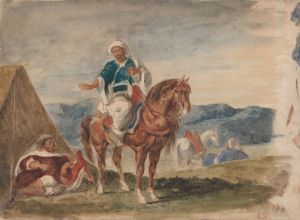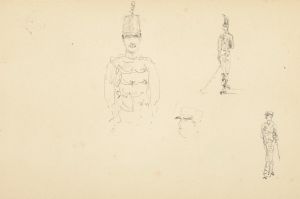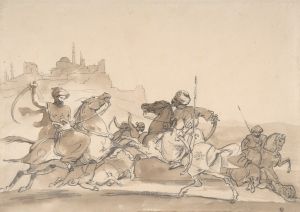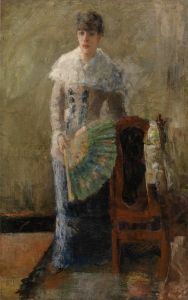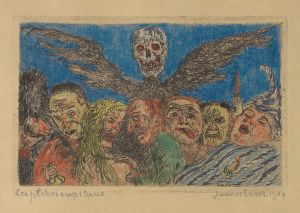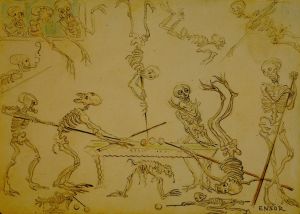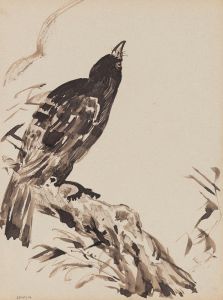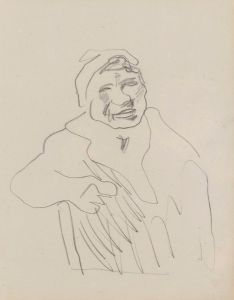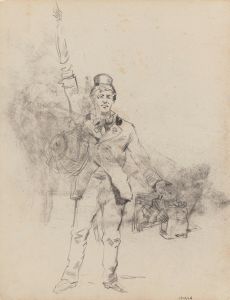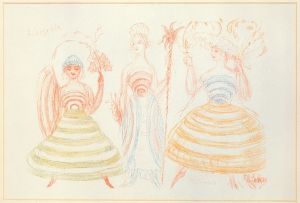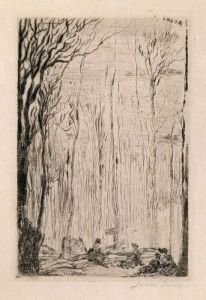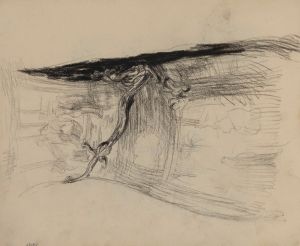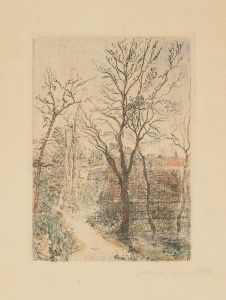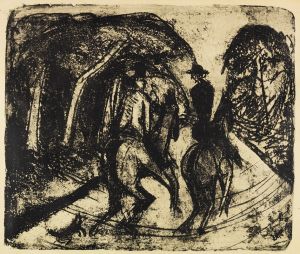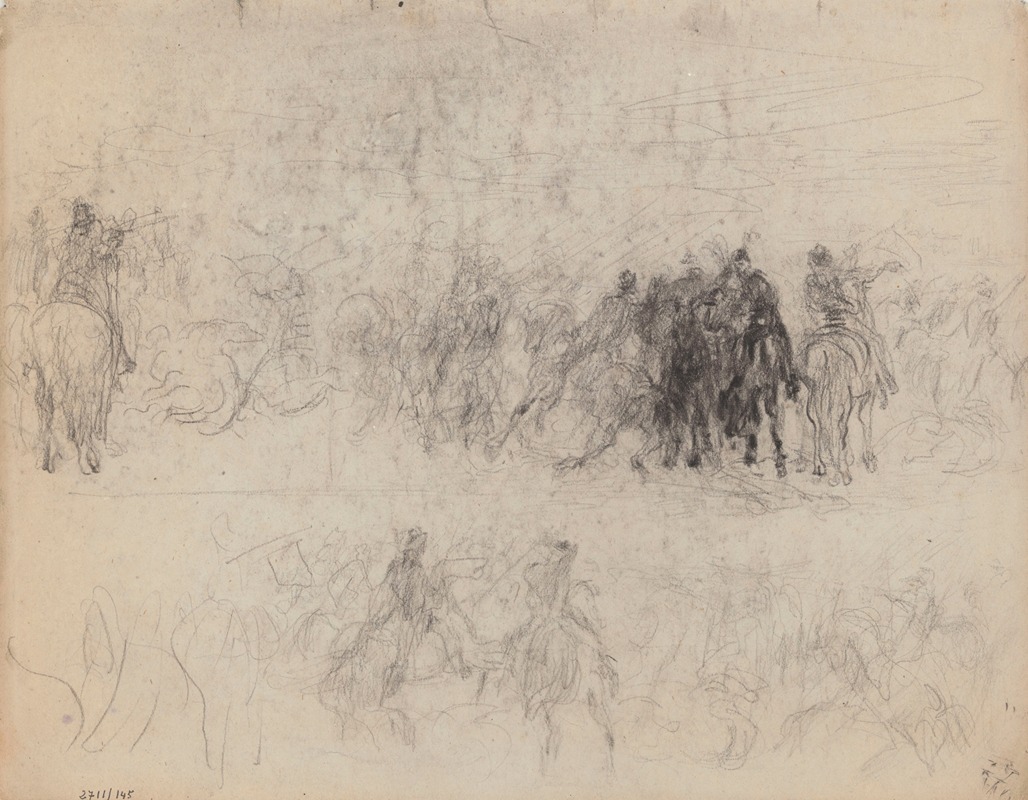
Horsemen
A hand-painted replica of James Ensor’s masterpiece Horsemen, meticulously crafted by professional artists to capture the true essence of the original. Each piece is created with museum-quality canvas and rare mineral pigments, carefully painted by experienced artists with delicate brushstrokes and rich, layered colors to perfectly recreate the texture of the original artwork. Unlike machine-printed reproductions, this hand-painted version brings the painting to life, infused with the artist’s emotions and skill in every stroke. Whether for personal collection or home decoration, it instantly elevates the artistic atmosphere of any space.
James Ensor's painting "Horsemen" is a notable work by the Belgian artist, who is renowned for his unique style that often incorporates elements of satire, fantasy, and the grotesque. Ensor, born in 1860 in Ostend, Belgium, was a pivotal figure in the transition from the 19th-century artistic traditions to the modernist movements of the 20th century. His work is characterized by its bold use of color, innovative techniques, and often, its critical commentary on society.
"Ensor's "Horsemen" is a reflection of his fascination with themes of mortality, power, and the absurdity of human endeavors. While specific details about the creation date or the exact context of "Horsemen" are not widely documented, it is consistent with Ensor's broader body of work, which frequently features masked figures, skeletons, and fantastical scenes. These elements are often interpreted as critiques of social norms and the human condition.
Ensor's style in "Horsemen" can be linked to his broader artistic approach, which often defied the conventions of his time. He was associated with the avant-garde group Les XX, which was instrumental in promoting modern art in Belgium. Ensor's work, including "Horsemen," often employs vivid colors and dynamic compositions, drawing the viewer into a world that is both familiar and unsettling. His use of masks and skeletons can be seen as a metaphor for the hidden truths and hypocrisies of society.
The painting likely features a group of riders, possibly depicted in a surreal or exaggerated manner, consistent with Ensor's tendency to blend reality with fantasy. This approach allows Ensor to explore complex themes such as the futility of human pursuits and the omnipresence of death. His work often challenges viewers to question their perceptions and consider deeper philosophical questions.
Ensor's influence on modern art is significant, as his innovative techniques and thematic explorations paved the way for later movements such as Expressionism and Surrealism. His ability to convey complex ideas through striking visual imagery has earned him a lasting place in art history. "Horsemen," like many of his works, exemplifies his skill in using art as a medium for social commentary and introspection.
The painting is part of Ensor's broader oeuvre, which includes other famous works such as "The Entry of Christ into Brussels in 1889" and "Skeletons Fighting Over a Hanged Man." These paintings similarly explore themes of power, mortality, and the absurd, using Ensor's distinctive style to provoke thought and discussion.
In summary, while specific details about "Horsemen" may be limited, the painting is emblematic of James Ensor's artistic vision and thematic concerns. It reflects his innovative approach to art and his ability to challenge societal norms through his unique blend of fantasy and reality. Ensor's work continues to be celebrated for its originality and its profound impact on the development of modern art.





